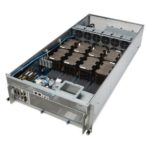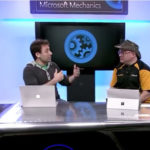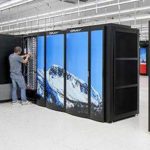Microsoft Azure CTO Mark Russinovich recently disclosed major advances in Microsoft’s hyperscale deployment of Intel field programmable gate arrays (FPGAs). These advances have resulted in the industry’s fastest public cloud network, and new technology for acceleration of Deep Neural Networks (DNNs) that replicate “thinking” in a manner that’s conceptually similar to that of the human brain.
Rock Stars of HPC: Karan Batta
From software developer at a small start-up in New Zealand, to Senior Program Manager at one of the largest multinational technology companies in the US, Karan Batta has led a career touched by HPC – even if he didn’t always realize it at the time. As the driving force behind the GPU Infrastructure vision, roadmap and deployment in Microsoft Azure, Karan Batta is a Rock Star of HPC.
Rambus Collaborates with Microsoft on Cryogenic Memory
“With the increasing challenges in conventional approaches to improving memory capacity and power efficiency, our early research indicates that a significant change in the operating temperature of DRAM using cryogenic techniques may become essential in future memory systems,” said Dr. Gary Bronner, vice president of Rambus Labs. “Our strategic partnership with Microsoft has enabled us to identify new architectural models as we strive to develop systems utilizing cryogenic memory. The expansion of this collaboration will lead to new applications in high-performance supercomputers and quantum computers.”
Overview of the HGX-1 AI Accelerator Chassis
“The Project Olympus hyperscale GPU accelerator chassis for AI, also referred to as HGX-1, is designed to support eight of the latest “Pascal” generation NVIDIA GPUs and NVIDIA’s NVLink high speed multi-GPU interconnect technology, and provides high bandwidth interconnectivity for up to 32 GPUs by connecting four HGX-1 together. The HGX-1 AI accelerator provides extreme performance scalability to meet the demanding requirements of fast growing machine learning workloads, and its unique design allows it to be easily adopted into existing datacenters around the world.”
Radio Free HPC Looks at Azure’s Move to GPUs and OCP for Deep Learning
In this podcast, the Radio Free HPC team looks at a set of IT and Science stories. Microsoft Azure is making a big move to GPUs and the OCP Platform as part of their Project Olympus. Meanwhile, Huawei is gaining market share in the server market and IBM is bringing storage to the atomic level.
Nvidia Brings AI to the Cloud with the HGX-1 Hyperscale GPU Accelerator
Today, Microsoft, NVIDIA, and Ingrasys announced a new industry standard design to accelerate Artificial Intelligence in the next generation cloud. “Powered by eight NVIDIA Tesla P100 GPUs in each chassis, HGX-1 features an innovative switching design based on NVIDIA NVLink interconnect technology and the PCIe standard, enabling a CPU to dynamically connect to any number of GPUs. This allows cloud service providers that standardize on the HGX-1 infrastructure to offer customers a range of CPU and GPU machine instance configurations.”
Microsoft Releases Batch Shipyard on GitHub for Docker on Azure
“Available on GitHub as Open Source, the Batch Shipyard toolkit enables easy deployment of batch-style Dockerized workloads to Azure Batch compute pools. Azure Batch enables you to run parallel jobs in the cloud without having to manage the infrastructure. It’s ideal for parametric sweeps, Deep Learning training with NVIDIA GPUs, and simulations using MPI and InfiniBand.”
Video: Azure High Performance Computing
“Run your Windows and Linux HPC applications using high performance A8 and A9 compute instances on Azure, and take advantage of a backend network with MPI latency under 3 microseconds and non-blocking 32 Gbps throughput. This backend network includes remote direct memory access (RDMA) technology on Windows and Linux that enables parallel applications to scale to thousands of cores. Azure provides you with high memory and HPC-class CPUs to help you get results fast. Scale up and down based upon what you need and pay only for what you use to reduce costs.”
Matthias Troyer from Microsoft to Speak on Quantum Computing at PASC17
Today the PASC17 Conference announced that Matthias Troyer from Microsoft Research will give this year’s public lecture on the topic “Towards Quantum High Performance Computing.” The event will take place June 26-28 in Lugano, Switzerland.
Cray Collaborates with Microsoft & CSCS to Scale Deep Learning
Today Cray announced the results of a deep learning collaboration with Microsoft CSCS designed to expand the horizons of running deep learning algorithms at scale using the power of Cray supercomputers. “Cray’s proficiency in performance analysis and profiling, combined with the unique architecture of the XC systems, allowed us to bring deep learning problems to our Piz Daint system and scale them in a way that nobody else has,” said Prof. Dr. Thomas C. Schulthess, director of the Swiss National Supercomputing Centre (CSCS). “What is most exciting is that our researchers and scientists will now be able to use our existing Cray XC supercomputer to take on a new class of deep learning problems that were previously infeasible.”











